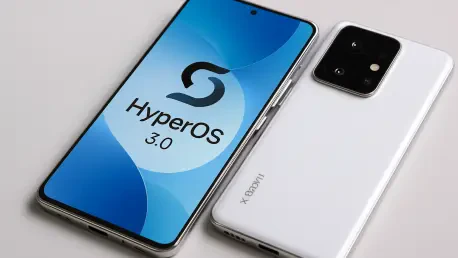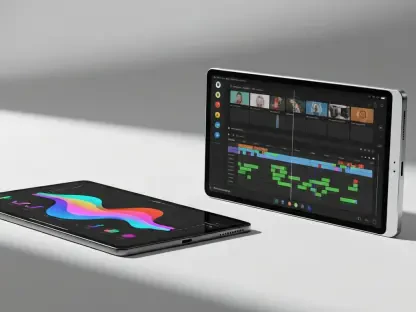Smartphone users today demand more than just functionality—they crave an experience that feels personal, seamless, and cutting-edge. Picture this: a device that not only keeps up with your pace but anticipates your needs with a sleek interface and intuitive features. Xiaomi has stepped into this arena with HyperOS 3.0, a major software update based on Android 16, designed to transform how users interact with their devices. This release, initially rolled out in China, has sparked curiosity among tech enthusiasts worldwide. What makes this update stand out in a crowded market of smartphone operating systems?
The Significance of HyperOS 3.0 in Smartphone Evolution
In an era where smartphones are integral to daily life, the software behind them must evolve to meet escalating expectations for speed, design, and connectivity. HyperOS 3.0 emerges as Xiaomi’s bold response to these demands, offering a blend of aesthetic innovation and practical enhancements. This update positions Xiaomi as a formidable player against industry leaders like Apple and Samsung, especially as users increasingly seek cohesive experiences across diverse device ecosystems. The importance of this release lies in its potential to redefine user interaction, making it a pivotal moment for Xiaomi’s global reputation.
This update also reflects a broader industry shift toward user-centric design, where visual appeal and performance are no longer optional but essential. With HyperOS 3.0, Xiaomi aims to bridge gaps between different platforms, catering to users who navigate mixed environments of Android and Apple products. Such ambition signals a strategic move to capture a wider audience, emphasizing why this software update matters beyond just a routine refresh.
Unveiling the Core Features of Xiaomi’s Latest Update
At the heart of HyperOS 3.0 lies a series of innovations crafted to elevate the smartphone experience. One highlight is Super Island, a dynamic notification hub inspired by Apple’s Dynamic Island. Positioned at the top of the screen, it delivers real-time updates on app activities, schedules, and media controls, ensuring critical information is accessible without overwhelming the display. This feature promises to keep users informed while maintaining a clean, organized interface.
Beyond notifications, Xiaomi has introduced a visual redesign that rivals premium aesthetics. Icons now sport a minimalist, iOS-like style, complemented by a customizable home grid and a streamlined status bar. These changes aim to simplify navigation, offering a polished look that feels intuitive even for first-time users. The design overhaul reflects meticulous attention to detail, targeting an experience that feels both modern and effortless.
Performance enhancements and smarter AI capabilities further define this update. While Xiaomi has kept technical specifics under wraps, early indications point to faster app launches and improved multitasking, driven by under-the-hood optimizations. Additionally, enhanced AI is expected to predict user behavior more accurately, tailoring interactions to individual habits. These advancements suggest a focus on efficiency, positioning HyperOS 3.0 as a robust upgrade for power users and casual owners alike.
Seamless Connectivity Across Ecosystems
A standout aspect of HyperOS 3.0 is its emphasis on cross-platform integration, a critical need for users juggling multiple device types. This update enables smooth data sharing with Apple products such as iPhones and Macs, a feature that mirrors similar efforts by competitors like Oppo. For those who work or socialize across ecosystems, this interoperability could prove invaluable, reducing friction in file transfers and communication.
However, not all features will be universally available due to regional variations. For instance, a redesigned dialer app, showcased as part of the update, appears to be exclusive to China, with global markets likely retaining Google’s Phone app. Such discrepancies highlight the challenges Xiaomi faces in delivering a consistent experience worldwide, a factor that could shape user perceptions in different regions.
Early Impressions and Official Insights
During the official unveiling, Xiaomi underscored a commitment to putting users first, a theme that resonated strongly in initial feedback from tech communities in China. A company spokesperson declared, “HyperOS 3.0 redefines the role of smartphones in daily life, blending innovation with practicality.” This statement aligns with early buzz around features like Super Island, which users have praised for its utility and sleek execution, often drawing favorable comparisons to Apple’s implementation.
Despite the excitement, some skepticism persists, particularly regarding whether performance boosts will be noticeable on older Xiaomi models. Forum discussions reveal a mix of optimism and caution, with users eager for beta testing results to confirm the update’s impact across device generations. These preliminary reactions set the stage for a broader evaluation as more hands-on experiences emerge, offering a glimpse into Xiaomi’s software ambitions.
Rollout Details and How to Access the Update
For those eager to explore HyperOS 3.0, Xiaomi has outlined a structured rollout plan beginning with beta testing. The process starts with flagship devices like the Xiaomi 15 series and Redmi K80 Pro as of late August 2025, extending to models such as the Xiaomi MIX Flip 2 by mid-September, and concluding with the Xiaomi 14 series by the end of that month. Tablets like the Xiaomi Pad 7 series are also included, demonstrating the update’s wide applicability across Xiaomi’s product range.
The stable version is anticipated in the final quarter of 2025, though precise dates remain unconfirmed. Users can check eligibility for beta or stable releases through Xiaomi’s official community forums or support channels. A word of caution: joining the beta phase requires backing up data due to potential bugs in early builds, and global users should note that feature availability might vary by region, potentially delaying access to certain elements.
To ensure a smooth transition, staying updated via Xiaomi’s announcements is advisable. The phased approach to this rollout reflects a balance between innovation and stability, though it may test the patience of non-flagship device owners or those outside China. This careful deployment strategy underscores Xiaomi’s intent to refine the update before a full-scale launch.
Reflecting on a Milestone Update
Looking back, HyperOS 3.0 stood as a defining chapter in Xiaomi’s journey to elevate smartphone software, blending striking design with functional depth. Features like Super Island and cross-platform connectivity marked significant strides toward a more integrated user experience. The phased rollout, starting in 2025, showcased a commitment to quality through extensive testing across diverse devices.
As the tech landscape continues to evolve, users and enthusiasts are encouraged to explore how such updates can transform daily interactions with technology. Keeping an eye on Xiaomi’s future announcements will be key to understanding the long-term impact of this release. Engaging with community forums or official updates can also provide deeper insights into maximizing the benefits of HyperOS 3.0, paving the way for smarter, more connected experiences ahead.









